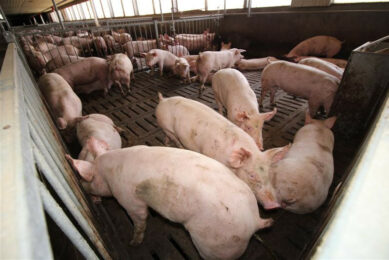African Swine Fever kills hundreds of pig in Uganda
African Swine Fever (ASF) has been rife in Uganda, 600 pigs have been affected and killed by it since April. The Gulu District and surrounding areas are said to be where ASF struck.
Only two sub-counties in the Gulu District have not been affected by ASF however, the remaining 14 have been hit.
There have been previous warning to farmers regarding the way pigs should be kept and not allow the animals to come in contact with carcasses. However, veterinary officer, Dr Tony Aliro, has said that as a result of free ranging pigs and an under intensive management system most deaths of pigs occurred. “The disease is so intense. This calls for alertness by the public on their farming techniques,” Dr Aliro added.
Dr Aliro said that African Swine Fever may make its way to other districts in the region. According to the veterinary department, ASF kills about 40 pigs per week in the district.
About AFrican Swine Fever
African swine fever (ASF) is the main threat to the development of the African pig industry. Its destructive potential was fully appreciated when, in 1957, it made its first appearance outside Africa. Heavy losses were experienced in areas of high pig production in Europe and subsequently the Caribbean and Brazil. Eradication was achieved only at a cost of several billion dollars and, for the Iberian Peninsula, took more than 30 years. ASF remains endemic in Sardinia (Italy). In Africa, re-emergence of the disease in 1994 has devastated pig production in many countries and the situation in others needs to be clarified. Its extremely high potential for transboundary spread has placed all the countries in the region in danger and has raised the spectre of ASF once more escaping from Africa. It is a disease of growing strategic importance for global food security and household income.
African swine fever (ASF) is the main threat to the development of the African pig industry. Its destructive potential was fully appreciated when, in 1957, it made its first appearance outside Africa. Heavy losses were experienced in areas of high pig production in Europe and subsequently the Caribbean and Brazil. Eradication was achieved only at a cost of several billion dollars and, for the Iberian Peninsula, took more than 30 years. ASF remains endemic in Sardinia (Italy). In Africa, re-emergence of the disease in 1994 has devastated pig production in many countries and the situation in others needs to be clarified. Its extremely high potential for transboundary spread has placed all the countries in the region in danger and has raised the spectre of ASF once more escaping from Africa. It is a disease of growing strategic importance for global food security and household income.
The extremely rapid spread of ASF is due to its highly contagious nature and the ability of the virus to persist in a protein environment, including meat products, for long periods. The fact that mortality is nearly 100 percent creates an enormous surplus of dead pigs, which constitute a huge reservoir of virus. Since no vaccine exists, the only means of control is by compulsory slaughter, avoidance of which leads to clandestine movement of potentially infected pigs. (source: FAO)
Source: allafrica.com











